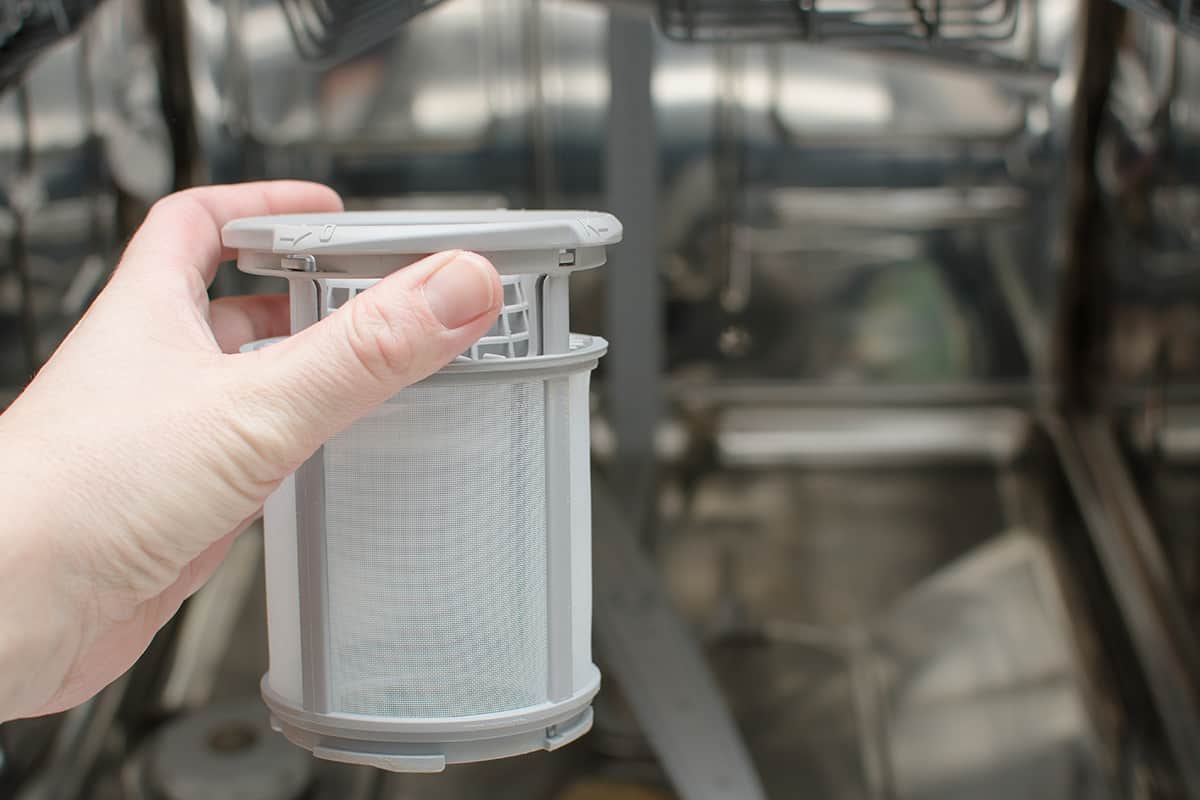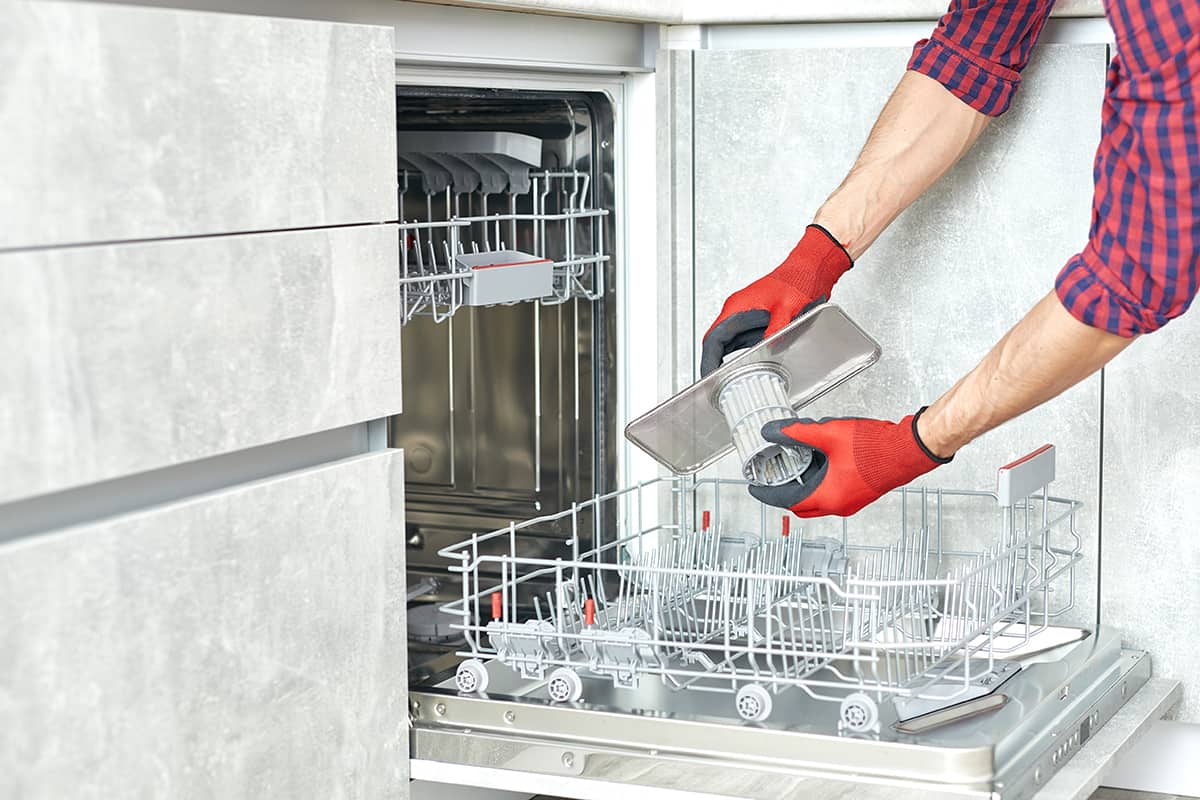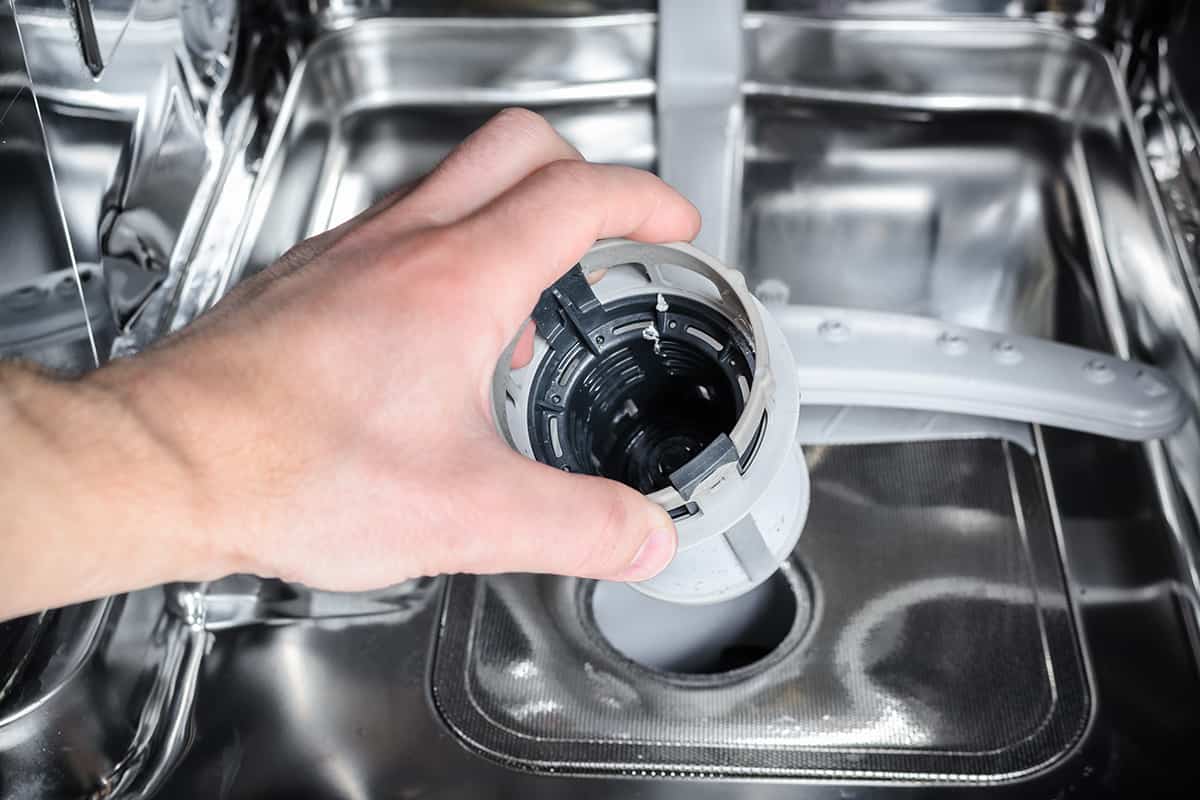Every household has a superhero that keeps dishes sparkling clean – the dishwasher. But, just like superheroes need their tools, dishwashers need clean filters to function effectively. Over time, these filters can get clogged with food particles and residue, reducing the machine’s performance. That’s why it’s crucial to know how to change a dishwasher filter, ensuring your dishes always come out spotless.
Changing a dishwasher filter involves:
- Locating the filter at the bottom of the dishwasher
- Gently unscrew and remove the old filter
- Rinsing the new filter before installing
- Placing the new filter in the same position and screwing it back in place
In this article, we’ll dive deeper into these steps, discuss the importance of changing dishwasher filters, and provide troubleshooting tips for common dishwasher problems.
Understanding Your Dishwasher
Ever wondered how your dishwasher works its magic? A dishwasher is not just a box that sprays water on dishes. It’s a complex machine designed to clean and sanitize your dishes efficiently. To keep it working smoothly, let’s quickly learn about its different parts and functions.
Locating and Identifying the Dishwasher Filter
The filter is usually located at the bottom of the dishwasher. It’s responsible for trapping food particles and preventing them from re-entering the wash cycle. There are two types of filters:
- Self-cleaning filters—These are designed for grinding up food particles so they can be easily washed away. They require less maintenance but can be noisier.
- Manual filters—These need to be cleaned regularly. They are quieter but require more maintenance.
To locate your filter, remove the bottom rack. The filter is usually a round piece in the center-bottom area. It might have a handle or a knob to twist and remove it.
How Dishwasher Filters Work
So, how does this filter keep your dishes clean? During a wash cycle, water is sprayed onto the dishes, which removes food particles. These particles get mixed with water and are pulled toward the filter. The filter traps these particles, stopping them from being sprayed back onto the dishes.
Over time, the filter can get clogged with these particles, reducing the dishwasher’s cleaning efficiency. This is when you know it’s time to change or clean the filter.
Preparing to Change Your Dishwasher Filter

Before we start the process of changing a dishwasher filter, it’s important to be well-prepared. This means gathering the right tools and knowing how to safely handle the filter.
Tools You’ll Need—Your Dishwasher Maintenance Kit
Changing a dishwasher filter doesn’t require a lot of tools. In fact, in most cases, you won’t need any tools at all! Most dishwasher filters are designed to be unscrewed by hand.
But having a pair of rubber gloves handy is a good idea. They will keep your hands clean and give you a better grip on the filter. Also, you’ll need a new filter for your specific dishwasher model. You can usually find this online or at a home appliance store.
Safety Precautions When Handling a Dishwasher Filter
Safety is paramount when handling any appliance, including your dishwasher. Here are some important safety tips to keep in mind:
- Disconnect power—Always unplug your dishwasher from the power source before starting. This ensures that the machine doesn’t accidentally turn on while you’re working.
- Avoid sharp edges—Be cautious of sharp edges inside the dishwasher. Wearing gloves can help protect your hands.
- Handle the filter carefully—Dishwasher filters can be delicate. Handle them with care to avoid any damage.
Now that we’ve gathered our tools and understood the safety measures, we’re ready to change the dishwasher filter.
Step-by-Step Guide to Changing Your Dishwasher Filter
Ready to become a dishwasher maintenance pro? Let’s dive into the step-by-step process of changing your dishwasher filter.
1. Removing the bottom rack and locating the filter
First, empty your dishwasher and take out the bottom rack. This will give you clear access to the filter. It’s usually found in the center bottom of the dishwasher, often looking like a round cap or a cylindrical piece.
2 Proper removal of the old dishwasher filter
Wearing your rubber gloves, gently turn the filter counterclockwise. Most filters are designed to unscrew easily by hand. Be careful not to force it, as this could damage the filter or the dishwasher. Once it’s unscrewed, lift the filter out of the dishwasher.
3. Preparing your new filter—what to do before installation
Before installing the new filter, give it a quick rinse under warm water. This helps to remove any dust or residue from packaging. Always handle the new filter gently to prevent any damage.
4 How to Install a New Dishwasher Filter
To install the new filter, place it in the same spot where the old filter was. Ensure that it’s seated correctly, then gently screw it clockwise until it’s secure. Do not over-tighten the filter, as this could damage it.
5 Reassemble your dishwasher
With the new filter installed, you’re almost done. Simply slide the bottom rack back into the dishwasher. Now, it’s ready for a test run. Run a short wash cycle with no dishes to ensure everything works correctly.
Post-Filter Change Maintenance

Congratulations! You’ve successfully changed your dishwasher filter. Now that you’ve successfully changed your dishwasher filter, it’s time to learn about maintenance that will keep your dishwasher running smoothly.
How to properly clean your dishwasher post-filter change
After changing the filter, it’s a good idea to give your dishwasher a thorough clean. Here’s how:
- Clean the interior—Using a damp sponge and mild soap, wipe down the interior walls of the dishwasher. Don’t forget to clean the door edges and handles.
- Run a cleaning cycle—Run an empty wash cycle using a dishwasher cleaner. This will help remove any remaining residue and freshen up your dishwasher.
Tips for Ongoing Dishwasher Maintenance
Keeping your dishwasher in top shape is a year-round task. Here are some tips:
- Regularly clean the filter—Even with a new filter, regular cleaning is crucial. Once a month, remove the filter and rinse it under warm water.
- DO NOT rinse dishes before loading—It might sound counterproductive not to rinse your dishes before placing them inside your dishwasher, but it’s true. Modern dishwashers come with soil sensors that instruct to adjust water, heat, and detergent based on how soiled the dishes are. If you pre-rinse your dishes, your dishwasher may register a false positive and apply less water, heat, and detergent than necessary.
- Load correctly—Ensure dishes are loaded correctly. Improper loading can block water jets and affect cleaning.
FAQs
1. How often should I change my dishwasher filter?
The frequency of changing your dishwasher filter depends on the type of filter and how often you use your dishwasher. As a general rule, a manual filter should be cleaned every month and replaced every 5 years. If your dishwasher has a self-cleaning filter, it will not require frequent changing but should be replaced every 5 years.
2. What are the risks of not changing my dishwasher filter?
Not changing your dishwasher filter can lead to a number of issues. A clogged filter can reduce your dishwasher’s cleaning efficiency, leaving dishes dirty even after a wash cycle. Over time, it can also cause unpleasant odors in your dishwasher and may even result in damage to its pump and motor.
3. Can I clean my dishwasher filter instead of changing it?
Yes, you can and should clean your dishwasher filter regularly. However, cleaning can’t always restore a filter that’s worn out or damaged. Make sure you replace the filter when necessary to ensure your dishwasher continues to work effectively.






